« October 2005 | Main | December 2005 »
November 28, 2005
A Hero
(고뉴스=종합뉴스팀 기자) 영화 'D-War'의 심형래 감독이 본지에 황우석 교수를 격려하는 편지를 기고했다. 심 감독은 28일 오전 본지 기자에게 보낸 이 편지글을 통해 7년전 황교수와 만났던 일화를 공개하며 변함없는 지지의 뜻을 밝혔다. (다음은 심형래 감독이 보내온 편지 전문.)
황우석 교수님께 안녕하십니까? 영화감독 심형래입니다.
황우석 교수님께서 배아줄기세포 분야의 연구에 차질을 빚고 있으시고 연구실에 모습을 비치지 않고 실험에 어려움을 겪고 있는 것으로 전해 듣고 이렇게 글을 적습니다.
7년 전쯤으로 기억되는데 루프스 환자 돕기 모임에서 황우석 교수님을 만나 커피한잔을 마시며 재미있는 이야기를 나눌 때 가장 많이 웃어 주시던 해맑은 미소가 기억이 납니다. 그때의 해맑던 미소는 사라지시고 연구를 제대로 하지 못하고 계시다는 소식에 가슴이 아픕니다.
글로벌화 시대에 총, 칼 없는 기술력 전쟁이 전세계 곳곳에서 일어나고 있습니다. 우리가 도전해야 하는 분야는 우리만의 독자적인 기술력입니다.
영웅이 많은 나라가 잘 사라는 나라입니다. 선진국의 국민들은 영웅이 나오면 격려와 함께 제도적으로 밀어주는데 우리나라 사람은 영웅이 나오려고 하면 비난을 하거나 짓밟는 데에만 혈안이 되어 있습니다.
예를 들어 내가 SF영화를 만들어 우리영화를 최초로 전세계 수출하기 위하여 칸느에 갔을 때 정작 용가리가 국제적 망신을 시키고 있다고 비난한 매체는 다름 아닌 한국의 영화잡지였습니다. 그리고 칸느에 용가리 포스터를 붙어 놓았을 때 외국인은 대단한 영화라고 놀라며 지나갔을 때 비웃고 조롱하는 사람은 바로 한국사람이었습니다.
과학자가 제도적으로 보호 받지 못하고 세계가 인정한 연구가 중단되는 것은 말이 안 되는 것입니다. 윤리적 인권문제로 연구가 중단된다면 불치병환자가 치료 받고 싶은 권리도 존중되어야 합니다.
제가 힘들게 용가리를 만들어서 세계적으로 수출이 되고 있을 때 모든 매체가 저를 격려했을 때 유독 저를 비난하고 사기꾼으로 몰고 가는 언론매체가 있었습니다. 황우석 교수님의 연구성과에 대해도 많은 매체가 높이 평가할 때 비난을 하는 매체가 꼭 나타날 것입니다. 왜냐하면 속된말로 튀어보기 위하여 황우석 교수님께 비난의 화살을 쏘아야지만 마치 특종을 잡았다고 생각하는 기자들이 있기 때문입니다. 그런 작은 보도에 신경 쓰지 마시고 소신을 다하여 주십시오.
저도 남들이 시도하지 않는 SF영화 'D-War'를 만들고 있습니다. 저도 여기까지 걸어오면서 “우리 나라는 안 된다. 미국만이 할 수 있다.”라는 고정관념이 박힌 사람들 때문에 무척 힘들었습니다. 나와 비슷한 상황에 놓인 황우석 교수님을 보면 가슴이 너무 아픕니다.
존경하는 황우석 교수님. 저희 어머니도 불치병으로 힘들어하고 고통 받고 있습니다. 불치병을 가진 사람들의 가족은 하루하루가 얼마나 힘들겠습니까? 황우석 교수님이 존재하는 것만으로 힘든 환자와 가족에게 희망을 주셨습니다.
불치병으로 고통 받는 사람들에게 희망과 힘을 주기 위하여 연구를 계속해 주시고 어떠한 힘든 역경 속에서도 포기하지 마시고 힘내시기를 바랍니다.
황우석 교수님은 배아줄기 세포 연구로 세계적인 과학자가 되시고 저는 SF영화 'D-War'로 세계적인 감독이 되기를 원합니다. 다시 만나면 7년 전 보다 더 웃겨 드려서 다시 해맑은 미소를 찾을 수 있도록 도와드리겠습니다.
[출처 오유] [출처 DAU]
Posted by administrator at 08:17 PM | Comments (0) | TrackBack
November 23, 2005
Interview with Aron Hjartarson
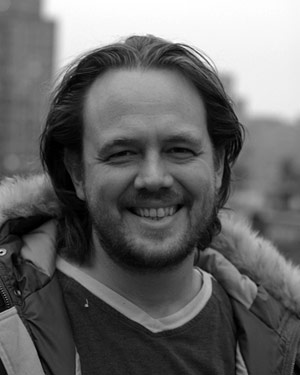
Aron Hjartarson, Head of 3D, The Mill New York.
The Head of 3D of The Mill's New York division talks about today's challenges in the commercials market, the cg industry and his career.
November, 22nd, 2005, by Raffael Dickreuter
How did you get started in the CG industry and what kind of education do you have?
I sort of got into the industry by accident. A few friends of mine at a company called OZ purchased an ancient 3D program from AT&T called Topaz and set it up at their office. I came by one day and got to play around with it and even if it was quite rudimentary, after doing my first revolved surface, I was hooked. I just thought that now anything was possible. There weren't any computer graphics programs at colleges available at the time in Iceland, so we had to figure out a lot on our own. This was also before the internet and e-mail, so most of our research took place by fax in the early years. I remember learning about raytracing via fax correspondence with Alias Research. We upgraded to Alias PowerAnimator from Topaz, running on IBM RS/6000 machines, which was quite a step up. My first "real" 3D workstation was a 33 Mhz IBM, with graphics acceleration. That meant you could orbit around a wireframe sphere without too much lag.
The toolset we had to work with was somewhat limited, so we had to write a lot of our own tools. We wrote the first digital compositing software in Iceland using a PC, a Truvision graphics card and a Diaquest tape controller. So every frame for every layer had to be got from tape, stored on disk, composited and laid to tape again because we didn't have enough disk space to store a lot of data. We wore down videoheads at our facility quite quickly. It all got a lot easier when we purchased our first 1 Gb hard drive. It was 4 times bigger than our biggest drive, and we thought we'd never fill that thing up. It was physically huge and it made a lot of noise too, like an idling Harley Davidson in the middle of our office.
One of the coolest things we did was a facial tracking system in 1992, that tracked position of points on a face from a video sequence. We managed to get 50 hz info from our PAL cameras by de-interlacing our footage and making sure our shutter speed was high enough to get crisp frames. A lot of the high frequency nuances were lost, but it got the job done. Then of course we met up with Softimage at some convention and out of that came the collaboration with mental ray - soft had just started shipping mental ray and needed a shader library to ship with it.
We wrote the original shader library that shipped with SOFTIMAGE|3D, and I think some of the code survives to this very day in XSI.
What do you like to do in your spare time?
I read a lot. I enjoy a good book and go through phases of interest.
Politics, philosophy and international affairs have consumed me for the most part of this century, for whatever reason. I also like playing guitar and sailing which I do enjoy a lot but never get to do as often as I'd like. I guess picking up the guitar is a lot easier than driving to the marina and casting off.
What moment in your life was influental to let you pursue a career in the CG industry?
There are quite a few moments I remember, most of them related to some cinematic trickery that really impressed me. Ray Harryhausen was definately an inspiration - when I was about 6 years old, they had matinees at a tiny theatre next to my house, the 7th Voyage of Sinbad and Jason and the argonauts played every Sunday. I must have seen each a hundred times, and they scared the living daylights out of me every time.
The earliest I really gave computer graphics any thought was when I was about 13 years old and was playing with a graphics program on my Amstrad. I went to see Ghostbusters at the cinema, and remember as I was coming home that a thought struck me - that the effects could perhaps be done in the computer. Then I thought further down the line and tried to imagine the complexities in calculating light and object interaction (I was thinking volumes at the time, not polygonal surfaces) and quickly came to the conclusion that it was impossible. Then of course came Young Sherlock Holmes, which was just amazing, and of course the Last Starfighter which I came away from scratching my head and thinking "how'd they do that?" Then the Abyss, which was just sheer magic. I didn't want to leave the cinema.
What do you consider some of the highlights of your career so far?
The best thing about my job so far is that it has given me a lot of freedom. I've been able to travel quite a lot, live in different places and experience different cultures. CG knowledge is a good passport.
What kind of work did you do before you joined The Mill NY?
I've done a variety of different jobs within the CG world, ranging from software design, R&D to production. I've done quite a bit of freelancing throughout my career, which is a great way to learn. All companies have different strengths and structure their pipelines in a different way, so studying the insides of a company while on a job provides good insights into what works, what doesn't and why.
Tell us a bit about what an average project The Mill gets involved looks like, how much time you have to complete the shots and how many people usually work on a show.
It is hard to define the average CG project at The Mill, apart from the fact they usually require computer generated imagery produced in less than the time required to get them done. Seriously though, the team sizes vary a lot from job to job. What we have done to adapt ourselves to our market is to build a component based pipeline, chopping projects up into small chunks that are easy to distribute between various resources. This makes us more flexible and makes it easier to deal with the demands of the advertising industry which at times can be a bit extreme.
How early on does The Mill get involved in a project and to what extent do you guys also provide on set supervision?
One of the keys to The Mill's success has undoubtedly been to make ourselves available at the early stages of development of a project.
This way we can help influence the direction a project will take, perhaps offer up a different perspective on how to approach unusual challenges and make sure everything runs smoothly further down the pipeline. I put great emphasis on data collection on set, so I usually come back with a few gigs of data from a shoot that helps me reconstruct everything once I'm back at the office.
The flip side of that is that sometimes we get involved at a later stage, when everything has been shot and we just get the tk'd footage.
That can sometimes be a hassle and involves a lot of guesswork, especially if there is a lot of matchmoving involved.
Are there any plans that The Mill will get involved again in the film business like back then with MillFilm?
There is no official policy as of yet to get back into film, and currently we are finding great success concentrating on our core business, the advertising industry. However, the film industry does provide a different set of challenges to commercials and we have always welcomed challenges.
Clients want better quality for less money and getting it done faster and faster. What's your way to guide your teams to keep up with the neverending new challenges and pressuring deadlines?
We try to improve our pipeline constantly, not just from a hardware / software point of view, but also by expanding the skillset of our core team by fostering knowledge and information sharing between team members.
If you compare the work being done in the London office to the New York office do you see any major differences in terms that London and New York face very different challenges or is it quite the same both in terms of cg work as well as industry related issues?
The US market is very different from the European one for a variety of reasons. The most obvious difference that comes to mind is the creative lead. In Europe, the director is usually involved from the start to finish, whereas in the States a director's involvement usually goes from pre-production until the last shoot day, passing on the creative lead to the agency, editor and ourselves. This often makes for a very interesting chain of command and fuzzy boundaries at times, but when the dynamic between the different parties is right, it leads to great results. I would say that the European market is also more subject to time constraints. I'm not sure as to why that is, but would hazard a guess that perhaps smaller local European consumer markets lack the inertia of the US one and require companies to turn campaigns around quicker.
What role plays XSI in the pipeline of The Mill?
The New York office relies heavily on XSI and mental ray. We will usually funnel output from external applications into that pipeline, unless there is a specific reason we have to do the job in another package.
Which features do you find very useful?
The tight integration of most components is a personal favourite. You can get things done really quickly.
Which areas should be improved?
Stability and rendering. There are a lot of features that XSI can adapt from a typical Renderman workflow like rib archiving for example. Using clever include methods of any flavour is important, too much time is "Lost in Translation".
What special skills or character traits are you looking for when hiring a new artist, besides just being talented?
Being a decent person is very important. I think basic social skills are a definite plus, the work we do is intense and requires everybody on the team to work closely together. It's important that you work with people you can get along with. I also look for innate talent, people that have an eye. If you know how to see, the rest is just a matter of building your skillset through training.
What do you think about the current state of the commercials CG industry in New York?
I think the current state of affairs is good and getting better. It was rare to see VFX work done here 3 years ago, only a handful of companies were fighting the good fight on the East Coast. The market is going through a lot of changes and we are at the right place at the right time. Our volume of work has grown and we are seeing increasingly ambitious projects land on our desks.
In the film industry the trend towards "we will fix it in post" often means uncessary work for production houses. To what extent do you see this also true for the commercials industry?
I think the perception of production actually being careless is a bit inflated and perhaps stems from the fact a lot of people that work in post do not frequent shoots. There is a lot of pressure on the crew to do a lot in very little time. Decisions are made very quickly, so it is good to be well prepared and know exactly what you need to get and how.
I can honestly say that I have never been on a shoot where everyone involved wasn't ready to do what they possibly could to make sure we would get what we need. Within reasonable limits of course, but in the end everyone wants to deliver a great looking project. On the rare occasions we get jobs in that do not have what we need, it is usually because we didn't have somebody there on the day and the director delivered what he thought was appropriate.
Related Links
The Mill
Posted by administrator at 07:21 PM | Comments (0) | TrackBack
November 19, 2005
Impressions about RenderMan for Maya
Pixar just released RenderMan for Maya, a plugin to use RenderMan integrated to Maya.The first tests I saw in 2004 Siggraph, were very impressive. The company where I work was one of the first to enter in the beta program in may. Soon, we perceived that Pixar had a great product in hands.
The plug-in is very easy to use, totaly integrated to Maya, you just need to switch the render to RenderMan in Render Globals Window. You still render your images in Render View and creates your shaders in hypershade in the same way that you are used to in Maya. You don´t have to learn new editors or tools.
RfM supports almost all shading nodes from Maya and you still can program your shaders using the RSL shading language. All existent shaders for RenderMan are compatible with RfM. If you have Slim it´s just a matter of compile the shader and load it in RfM; the compatibility is total.
Using RfM, the artist have a very robust render that can calculate global illumination, color bleeding and occlusion, besides all Pixar’s patented algorithms as motion blur and deep shadows.
If you are used to work with NURBS surfaces, you can forget all the tesselation problems as RfM is a true nurbs renderer. If you work with subdivision surfaces RfM renders in a more efficient way than Maya´s native render. This velocity was expected, as Pixar was the first company to implement subdivision surfaces. RfM, has a better memory management than other renders, so it can process heavier scenes.
We are using the plugin in production since june. Some scenes from “Claro Chuva” film, others from “Tim Festival 2005” and all the scenes from “Natura Vegetalização” (the images from this post are 2 moments of this film) were rendered using this new software.
As we work very closely with Pixar in the beta period, one of my conversations with the guys about all the changes that we were doing in our pipeline was utilized in a plugin launching press release.
More Review -> Click!!!
Posted by administrator at 11:18 AM | Comments (0) | TrackBack
Linux Flame
Autodesk introduces its flagship Discreet Flame visual effects system on Linux-based workstations. 16 November 2005
Autodesk has launched its Discreet Flame visual effects system on dual-core workstations running the Linux operating system. The Discreet Flame system is already available on workstations running the IRIX operating system. As a result, film studios, broadcasters and post-production facilities will have more flexibility and choice in shaping their digital content creation pipelines.
For more than a decade, the Discreet Flame system’s hallmark speed and creative toolset have set the standard for high-quality digital content creation. The system has helped digital artists realise ideas for hundreds of blockbuster films, television shows, television spots and channel brands. The system gives artists continuous innovation in a fully interactive 3D compositing environment that is packed with advanced creative tools for video, standard-definition (SD) and high-definition (HD) TV and 2K digital cinema post production.
Kevin Tengan, head of 2D systems at Los Angeles-based Rhythm & Hues Studios, said, “With the exception of our IRIX-based Autodesk Discreet systems, Rhythm & Hues Studios is predominantly a Linux shop. We’ve now integrated the new Linux-based version of Discreet Flame into our facility to create a more manageable, homogenous computing environment. The speed of this system is amazing, as is the stability. We’ve already completed three spots with it, one of which involved several client-assisted sessions. Our client was also blown away by the Flame capabilities on the dual-core workstation." Television spots were delivered for both the discount retailer Target Corp. and SeaWorld adventure parks.
Dave Smith, managing director at UK-based post-production facility Absolute, said, “The Discreet Flame system has been a big part of our business. The Flame system running Linux is a turning point for the industry. Autodesk’s use of high-performance, dual-core Linux workstations provides us with more flexible and cost-effective platform choices going forward. The system’s new tools, such as layer-based paint in batch, are great too because they increase our design flexibility.”
Autodesk’s Discreet Flint visual effects system and Discreet Smoke editing system are also available on Linux-based workstations, making Autodesk one of the world’s leading providers of digital content creation tools for the Linux operating system.
“Autodesk is dedicated to providing our media and entertainment customers with highly optimised Discreet systems that operate on the latest-generation workstations,” said Bill Roberts, director of product management for Autodesk’s Media & Entertainment Division. “Dual-core workstations offer fast, interactive performance that empowers digital artists to realise their creative visions faster than ever before; ultimately allowing the facility to be more productive.” Dual-core processor technology allows users to execute multiple tasks simultaneously at a faster rate than traditional single-core processor technology.
Autodesk’s Discreet Flame and Discreet Smoke 2K systems are currently available on SGI IRIX-based workstations. Autodesk anticipates that the following Discreet systems will be available on Linux-based workstations this coming January:
Discreet Flame and Discreet Smoke 2K systems.
Discreet Flint high definition (HD) and Smoke HD systems.
Autodesk will showcase a number of the aforementioned Discreet systems this week at the following events:
NAB Post +: Visit the Autodesk booth (# 302) at the Jacob Javits Convention Center in New York City, USA from Nov 15-17, 2005.
International Broadcast Equipment Exhibition (Inter BEE): Visit the Autodesk booth (# 7105) at the Nippon Convention Center in Makuhari Messe, Japan from Nov 16-18, 2005.
Related links:
Autodesk
Discreet Flame
Posted by administrator at 11:03 AM | Comments (0) | TrackBack
November 11, 2005
A Show Case
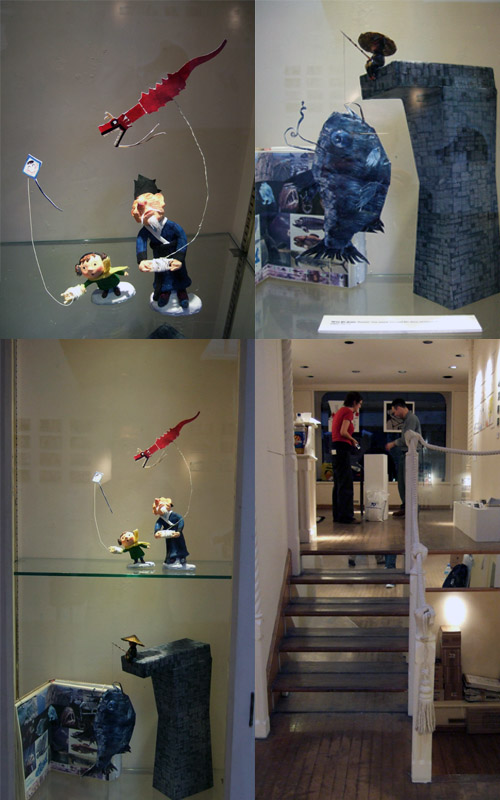
Omsk. The Coningsby Gallery 2005
Posted by administrator at 07:37 AM | Comments (0)
November 10, 2005
OMSK
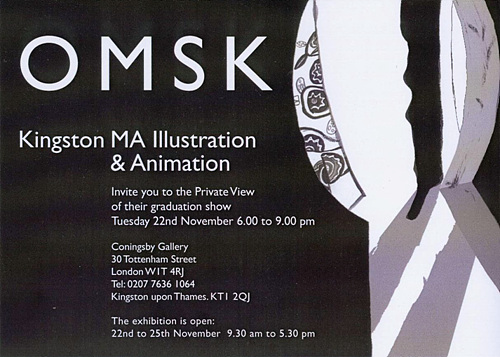
The first exhibition in UK. 2005.
Posted by administrator at 06:55 AM | Comments (0) | TrackBack
Kite-Fite
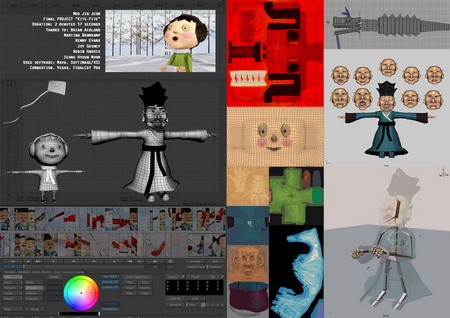
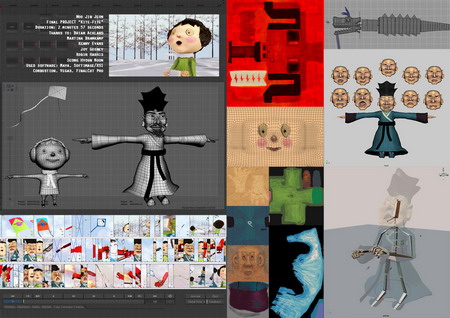

Final Project. KITE-FITE. coming soon.
Posted by administrator at 03:58 AM | Comments (0) | TrackBack
November 09, 2005
British Contemporary Unlimited
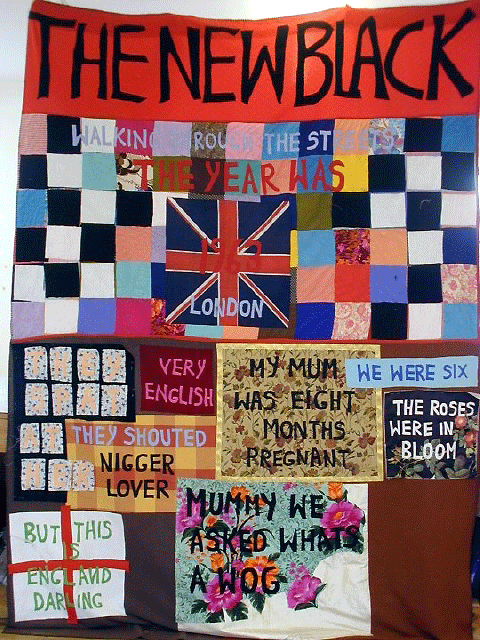
Nurses, Remembering 1963. Tracey Emin. 2002. Applique blanket, 289x204cm
Hours: October,28,2003~January,31,2004
Address: 354-1 Shinbu-dong, Cheonan-si, Chungcheongnam-do, Korea
Tel: 041-551-5100~5101
The British contemporary art burst into the world scene in the late 1980s with an exhibition by Damien Hirst, who, then still a student, rented a factory to offer his meticulously planned “Freeze.” The exhibition was a turning point for British art that had largely remained stagnant after the pop art movement in the 1950s without being able to produce new trends or noteworthy artists. “Freeze” put Britain firmly back on the world map of art, whereupon it began to lead new trends in the contemporary era.
What placed the British at the forefront of international art in the late 80s and early 90s is the fact that they best captured the fin-de-siecle emotions minant at the time, while boldly and freely undertaking new experiments unfettered by restrictidoons imposed by the prevailing art world or artistic discourse. Despite the diversity of works produced at the time, similar themes consistently shone through: inner turmoil at the turn of the century, critical views on human desires and the society, and experimental spirit that rejected an artist’s individuality for new artistic possibilities within variations of traditional art.
Artists and movements that led the trends at the turn of the century have now become a chapter in our history. The British contemporary art will be forever marked in history as an international art trend that gave images to the emotional turbulence at the end of the 20th century and new visions for the 21st century. The 10 artists whose works are shown in this exhibition are some of the major artists who dominated the contemporary British art scene. By exhibiting approximately 30 pieces of their work, Arario Gallery aims to introduce to the Korean public art that is at once most contemporary and most historic.
yBa(young British artists)라 불리며 1980년대 후반 영국 현대 미술의 새로운 흐름을 이끌었던 작가 중 데미안 허스트는 의료용으로 사용되는 포말데이드 용액에 절단된 동물의 신체를 넣음으로써 충격적인 작품을 만든 작가로 잘 알려져 있다. 이번 전시에 소개되는 그의 작품 중
자신의 몸을 캐스팅하고 또한 자신의 피를 직접 이용하여 작품을 제작하는 마크 퀸(Marc Quinn)은 1991년 첫 Self를 제작하였다. 약 8pints(4리터 정도의 피로 인간 몸 속에 들어있는 전체 피의 양로 거의 동일하다)의 피를 뽑아 제작한 이 작품은 냉동 장비에 의해서만이 그 형태를 유지할 수 있다. 이 작품은 작가 육체의 순간적 현존을 그대로 보존하고 있는 ‘자화상’으로 1997년 첫 전시되었을 때 미술계에 큰 충격을 주었던 작품으로 마크 퀸을 가장 많이 논의되는 작가로 만들었다. You take my breath away는 육체가 지닌 인간 정신의 표현력을 탐구한다. 고통받는 순교자와 같은 표정을 담고 있는 이 작품에 또한 작가의 육체적 현존이 각인되어 있다. 이러한 작품들을 통해 마크 퀸은 육체적 현존 자체의 중요성 보다는 육체라는 인간의 물리적 측면과 그가 지닌 정신적 측면 둘 사이의 관계를 궁극적으로 다룬다. 신체 장애자의 실제 몸을 캐스팅 함으로써 제작한 Kiss는 마치 그리스 시대의 대리석 조각과 같이 인간 신체의 아름다움과 고귀한 정신성을 표현한다. 하지만 그것은 장애인의 신체라는 점에서 하여금 우리가 일상적으로 비정상적이라 생각했던 존재들의 아름다움을 드러내는 작품 이다.
고백의 여왕이라는 별명이 붙기까지 한 트레이시 에민(Tracey Emin)은 자신의 개인적 경험들을 작품의 주요 소재로 삼는다. 그녀는 자신의 일기장, 편지, 메모 등 그녀이 자전적 삶을 대변할 수 있는 모든 기록물들을 모아 전시하는 것을 즐기며, 이불, 의자, 텐트 등 일상의 오브제에 그녀 특유의 카리스마적 서술체로 자신의 사랑, 고통, 존재의 문제를 새겨 넣는다. 이와 같은 작품을 통해 트레이시 에민은 사적 세계를 공론화 시키며 런던의 가장 말많은 작가가 되었다.
97년 베니스 비엔날레에서 ‘유망청년작가상’을 수상하기도 했던 샘 테일러-우드(Sam Taylor-Wood)는 사진, 영화, 비디오 설치 등 모든 미디어 장르를 망라해 작업한 작가이다. 극도로 사적인 공간 속에서 표현된 다양한 정신적 상태를 필름이나 사진으로 표현해내는 샘 테일러-우드는 불안과 불확실성이 지배하는 일상 속에서 그들의 삶에 좀더 자극적이고 가치있는 의미를 부여해 줄 수 있는 그 무엇을 내면적으로 갈구하는 권태로운 현대인의 모습을 다룬다.
존 아이삭(John Isaacs)은 자신의 작품에서 문명비판적 시각을 견지하며 과학의 발전에 대한 비판을 하고, 과학과 미술의 결합 지점을 인류 퇴화의 모습에서 발견한다. 그의 작품이 전달하는 이미지나 분위기는 어려운 이론이나 관념의 제시라기 보다는 즉각적으로 관객을 미묘한 심리 상태로 빠져들게 하고 도시나 현대 문명 사회에 역함을 느끼게 한다.
길버트 앤 조지(Gilbert & George)는 다른 9명의 작가 중 가장 선배격인 작가들로서 1970년대부터 이미 획기적인 작품으로 널리 알려졌다. 예술과 삶의 경계를 허물고자 하는 그들은 모든 사람들이 즐기로 이해할 수 있는 작품을 만들고자 하며, 인간의 상태에 주로 관심을 가진다. 사각형의 패널로 구성된 사직 작품이 특히 많은데, 전시된 작품 중 특히 Twelves는 동성애 문제를 다룸으로써 주류 사회 속에서 가려져 있던 비주류의 문화를 다룬다.
게빈 터크(Gavin Turk)는 예술 제도와 예술가라는 존재의 명성에 관한 날카로운 비판을 보여주는 작업을 한다. 그는 외부 세계로부터 소재를 가져와 작업한 작가들의 작품을 패러디하는 작업을 통해 작가의 독창성을 거부한다. 이번 전시에서는 마치 부랑자와 같은 모습의 자화상 Another Bum을 전시함으로써 작가의 명성에 대한 도전을 하며 예술가의 명성이란 오직 이름 속에서만 존재하는 것임을 강하게 어필한다.
영국 현대미술의 또 하나의 특징이 장르의 다양함 속에서도 여전히 회화가 그 힘을 잃지 않고 지속되고 있다는 점을 고려할 때, 게리 흄(Gary Jumn)은 회화 영역에서 작업하며 가장 앞서가는 작가들 중 한명으로 인정받는 작가 이다. 게리 흄은 그의 회화 작품에서 어떤 이야기 구조나 논리를 탐구하는 것이 아닌 기존 미술사를 구성해 온 요소들을 재배치함으로써 각각의 요소들이 고유하게 갖고 있던 의미를 약화시키거나 부정해버리는 방법을 취한다. 그 결과 작업은 의미의 모호성과는 상반되게 강한 시각적인 힘을 가진 아름다운 장식 회화가 되는 아이러니를 보여준다.
안토니 곰리(Antony Gormley)는 자신의 몸을 직접 캐스팅한 작업을 한다. 자신의 신체를 캐스팅 한 후 자세한 모습이 새겨져 있는 내부를 시각화 시키기 보다는 그것을 감싸고 있는 외부의 모습을 사람들이 만나게 한다. 이와 같은 작품을 통해 곰리는 내부와 외부의 공존을 탐구하고 존재하지 않는 신체의 존재를 탐구 한다. 또한 그는 자신의 작품이 그것이 놓여 있는 공간 자체와 가지는 상호 관계에 많은 관심을 가지면서 Reflection과 같은 작품을 제작한다.
제이크 앤 디노스 채프만 형제(Jake and Dinos Chapman Brothers)는 프란세스코 고야의 에칭 작업을 3차원 작업으로 재현해낸 작품으로 주목받기 시작했다. 이번 전시에 선보이는 Untitlable은 독일 나찌의 인간 살상을 주제로 한 작품으로 절단된 신체들과 기이하게 변형되어 환생한 악마적 살인귀들의 모습을 작은 인형 사이즈로 제작한 작품이다. 이와 같은 작품을 통해 그들은 인간에게 내제되어 있는 욕망과 잔악함과 그리고 폭력성을 다루며, 현대 사회 속에서 그와 같은 것들이 아무 거리낌 없이 상업화 되는 현실을 꼬집는다.
출처: http://www.arariogallery.co.kr/exhibition/ex02_01.jsp
Posted by administrator at 05:56 PM | Comments (0) | TrackBack
November 08, 2005
About me
Name: WOO JIN JEON
Location: Kingston Upon Thames : United Kingdom
Flat 7, Boundary Close
Kingston Upon Thames
KT1 3PE
07984 743 281
Mobile Phone: +44-7984-743-281 (UK: 07984-743-281)
Posted by administrator at 01:37 AM | Comments (0) | TrackBack
November 05, 2005
Blood
혈액형에 목숨 건 사람들이 의외로 많구나.
만드는 놈들이나, 목에서 피 토하면서 아니라고 하는 놈들이나.
이러니 정치판이 잘 돌아가지.
ㅋㅋ 그래도 재밌는 걸 어떻게 해. 그리고 당신은 점 안봐? 다 똑같어.
이러면 "역시 AB 형이시군요." "네. 그렇습니다"
Posted by administrator at 09:49 AM | Comments (0) | TrackBack
Reality
Gunpowder plotters get their wish, 400 years on By Adam Sherwin
TV re-creation makes the Guy Fawkes dream come true
IT IS what Guy Fawkes would have wanted. Four centuries after the most famous non-explosion in history, a documentary team has spent £1 million blowing up a replica Parliament.
ITV1 staged the pyrotechnics to see what would have happened if Fawkes and his fellow Roman Catholic conspirators had evaded detection and the Gunpowder Plot had succeeded.
Explosives experts built a full-size replica of the then Palace of Westminster on an MoD-owned testing site in Cumbria and packed 36 barrels with a tonne of gunpowder.
The results suggest that the impact of the blast would indeed have wiped out Britain’s elite if Fawkes had ignited the fuse 400 years ago this week.
Historians have previously suggested that the attempt would have failed. An examination of the gunpowder seized when the plot was discovered showed that it had decayed because of a month’s delay caused by plague before the 1605 State Opening of Parliament.
Working with blast consultants from engineering giant Arup, the producers of The Gunpowder Plot: Exploding the Legend sourced gunpowder closest to Fawkes’s compounds of saltpetre, charcoal and sulphur from a factory in Spain. Using 650 tonnes of concrete and based on archive plans, the undercroft where the gunpowder was hidden was recreated and the full Lords chamber built above. It was packed with perishable cameras, sensors and crash-test dummies to represent King James I and the 150 bishops, members of Parliament and noblemen present. A spectacular explosion ensued.
Unlike Fawkes, who planned to ignite the gunpowder with a cotton rope boiled in saltpetre, the ITV team pressed a red button in a control room connected by cable to the replica 750m (2,461ft) away.
The result, screened tomorrow, claims to prove that Fawkes’s plot would have propelled the timber floor of the Lords upwards with such violence that King James I and everyone else in the chamber would have been killed.
Arup, the engineering company that carried out the explosion for the show, said: “Any of the other physical effects of the explosion, such as direct blast pressure, scorching, impact of high-speed timber fragments and the impact of falling back down to the ground could also have killed many, if not all, of those present. But the extreme upward thrust would have been the primary cause of death.”
Tests carried out by Sidney Alford, the programme’s explosives consultant, showed that decayed powder does explode.
If Fawkes had lit the fuse, the powder would have blown — and he had twice the powder needed to destroy Parliament utterly.
Contrary to previous claims, the blast would have been relatively contained, with Parliament’s 1.8m-thick stone walls directing much of the pressure of the blast upwards.
The debris from the roof and floor of the chamber blown upwards would have rained down in a 200m radius. Experts also concluded that the blast could have been heard at least five miles away.
David Hadden, Arup’s blast consultant, said: “After years of speculation, the test has proved once and for all that Fawkes’ plan would have had devastating consequences for anyone present in the House of Lords that day, though not for the surrounding areas as previously thought.”